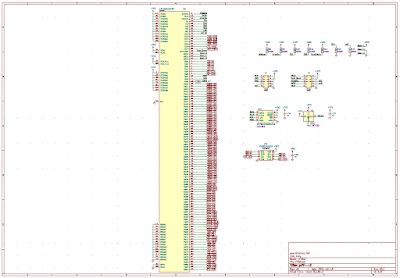To finalize my uPF--1 compatible board, I decided to implement the Wichit Sirichote's project :
I have already done this work a few years ago, but based on an Intel FPGA. Since then, I have improved in the VHDL language.
So I take advantage of this to code the whole machine again in this GoWin FPGA, also taking advantage of the improvements made by the new versions of certain components and the SDCC compiler, as well as the modifications that I have made myself.
This little development machine is very interesting. It allows you to become familiar with the operating principles of microprocessors.
Modern processors like ARM for example, still work the same way. Understanding how a Z80 works is a very good learning exercise. Much better I think than Arduinos, which, if they have a whole bunch of 'fun' advantages, mask a large part of the real functioning of the processors.
And now with the startup messages:

At the time, I called my work uPF--2. I will continue to name this little machine that way.
This is not a priority project. I will advance it as I can, over time...












